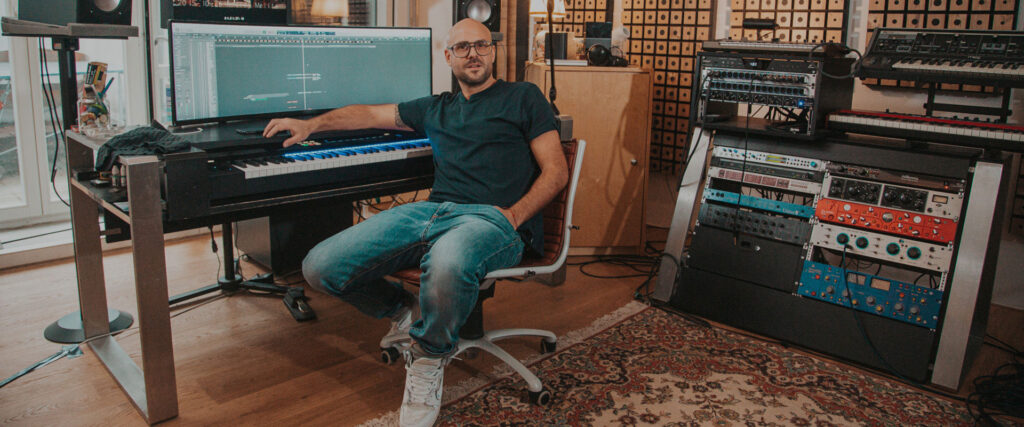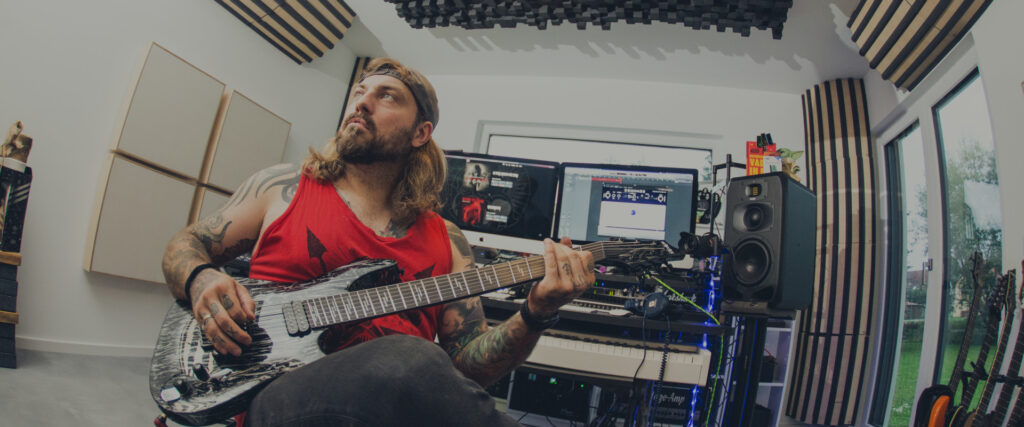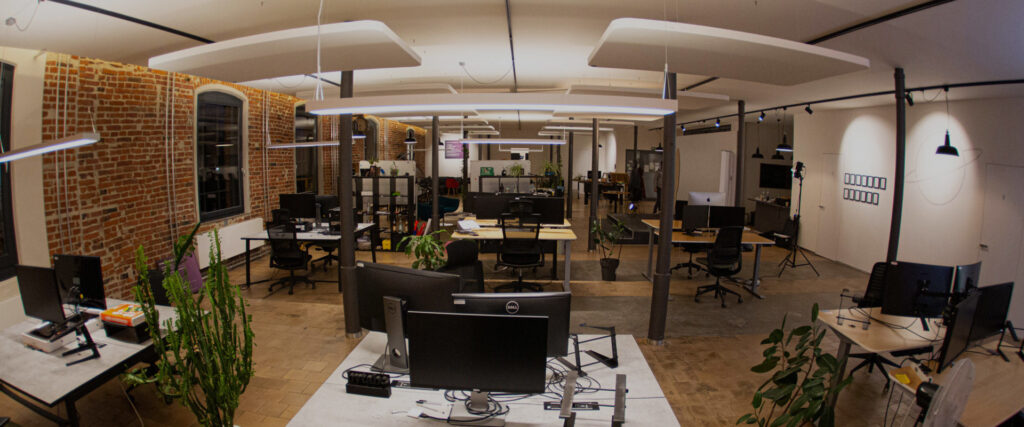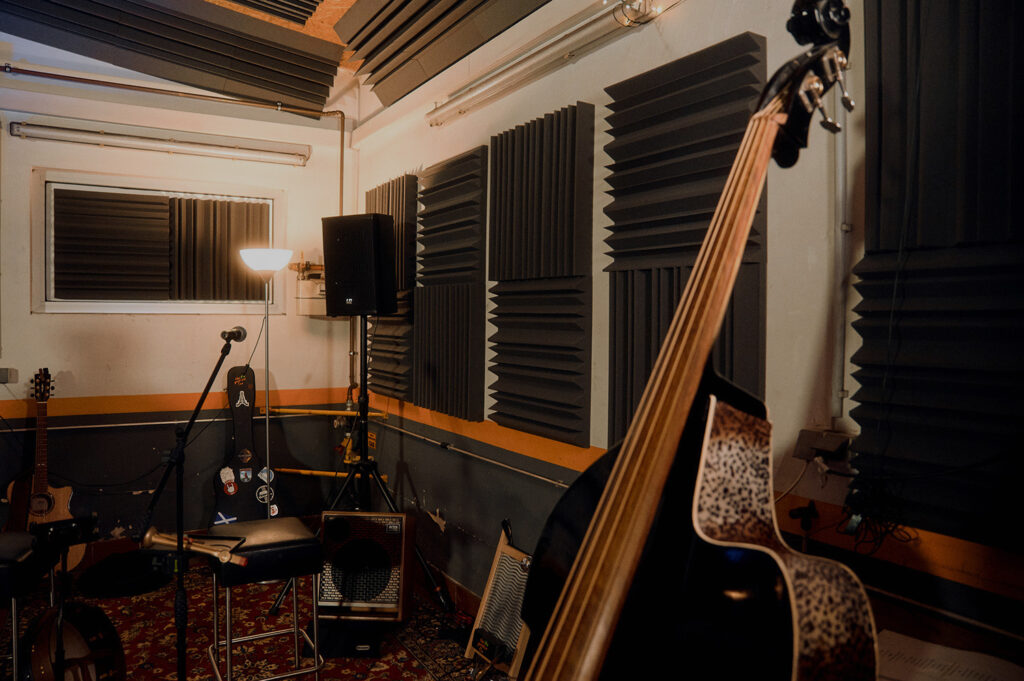
#USERCASE PRACTICE ROOM OPTIMIZATION
Leoni, a member of the electronic pop duo “Umme Block,” shares the recording space at Dark Room Studios in Munich with Mario from Blackout Problems. In their 60 square meter, brightly lit live room, they not only rehearse for their shows but also record their productions.
It was evident that one side of the room, particularly for drum recording, should be made more vibrant with diffusers. While diffusers only lightly dampen sound, they disperse it extremely effectively, avoiding flutter echoes without overdamping or causing a “muffled” sound. A wise choice, especially since the room’s ceiling was already acoustically treated.
On the other hand, the other side of their co-working space should be primarily damped. Hence, our t.akustik absorbers come into play here. After unpacking the absorbers, diffuser, and bass traps, they got straight to work. All the elements used are very light, allowing them to be directly attached to the walls with t.akustik contact glue.
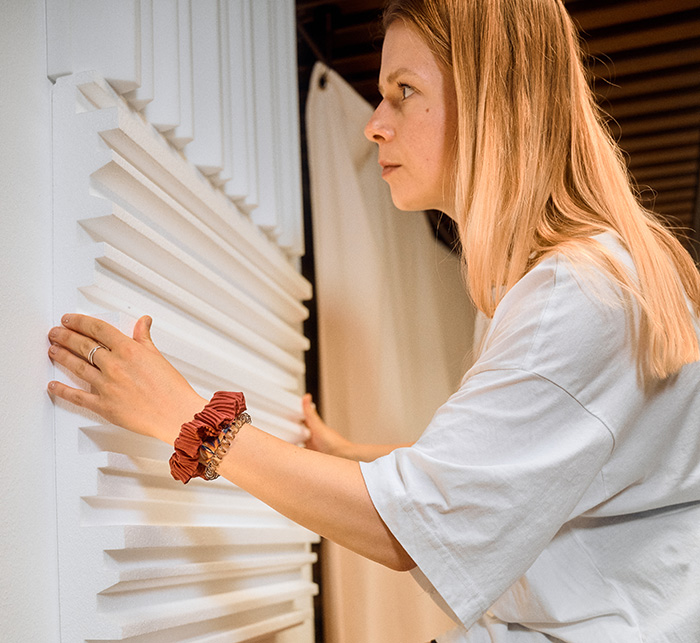
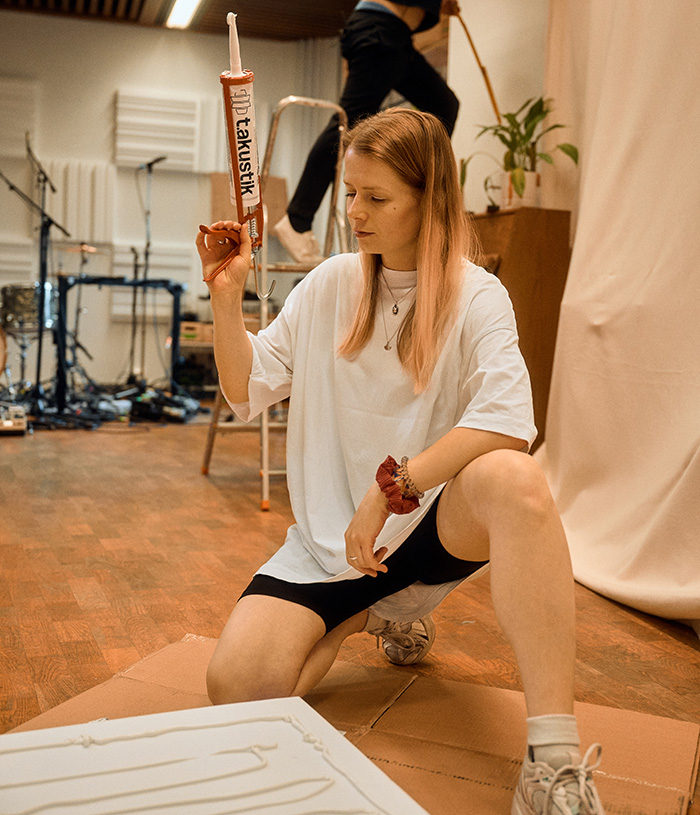
Umme Block
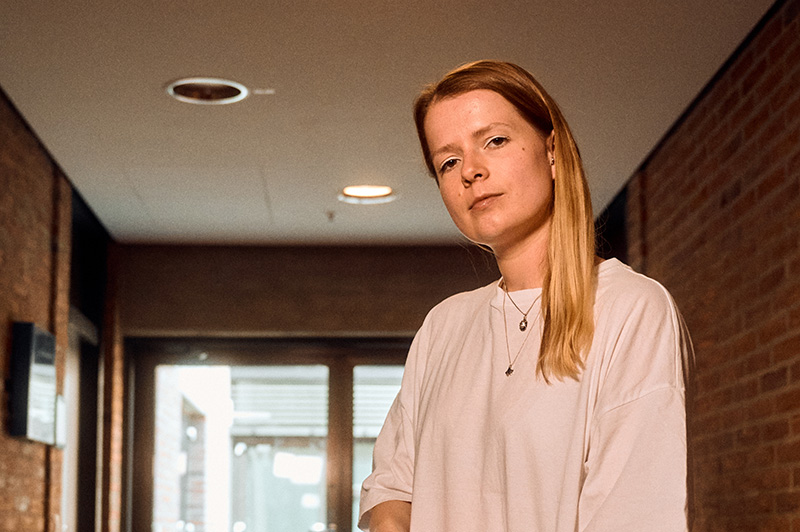

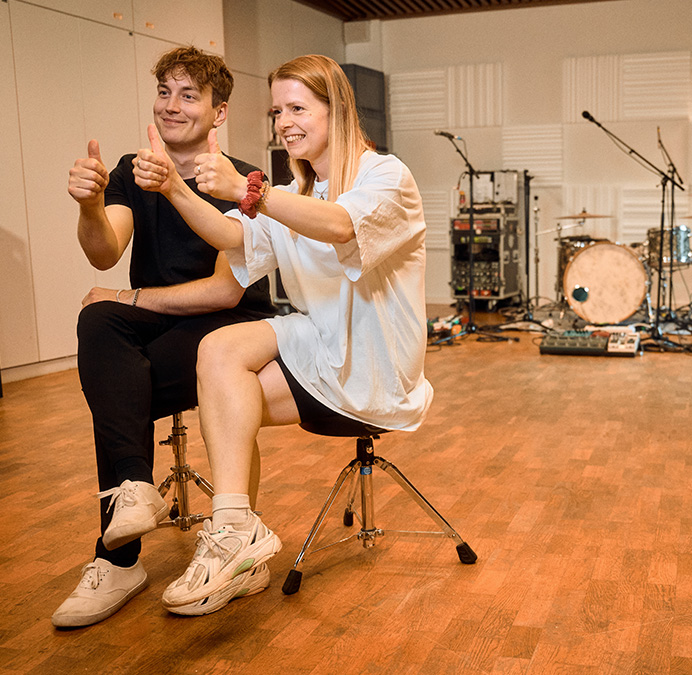
Leoni and Mario began by installing the t.akustik CBT-37, here in the stylish Melamine White, which complements the size of the room aesthetically. Positioned in the corners, these special corner bass traps effectively eliminate resonance, benefiting the drums in particular. As a rule of thumb: you can never have enough bass traps!
They then moved on to the t.akustik WAS-7 absorbers and the t.akustik WDS-7 diffuser, both with the same footprint, allowing them to be combined beautifully to enhance their effectiveness. In this particular case, they decided to exclusively apply absorbers to one side of the studio and treat the opposite side only with diffusers.
They adjusted the adhesive pattern accordingly: placing the absorbers closer together in rows of three elements each, while opting for a more conspicuous pattern with the diffusers. Moreover, both elements can be rotated by 90 degrees to further homogenize their acoustic effect.
After a brief and straightforward installation, both were very pleased with the result and are looking forward to their next projects – thanks to t.akustik, now with a much better sound in their new studio!
More like this
You need to load content from reCAPTCHA to submit the form. Please note that doing so will share data with third-party providers.
More InformationYou are currently viewing a placeholder content from Turnstile. To access the actual content, click the button below. Please note that doing so will share data with third-party providers.
More InformationYou are currently viewing a placeholder content from Instagram. To access the actual content, click the button below. Please note that doing so will share data with third-party providers.
More InformationYou are currently viewing a placeholder content from Instagram. To access the actual content, click the button below. Please note that doing so will share data with third-party providers.
More Information
